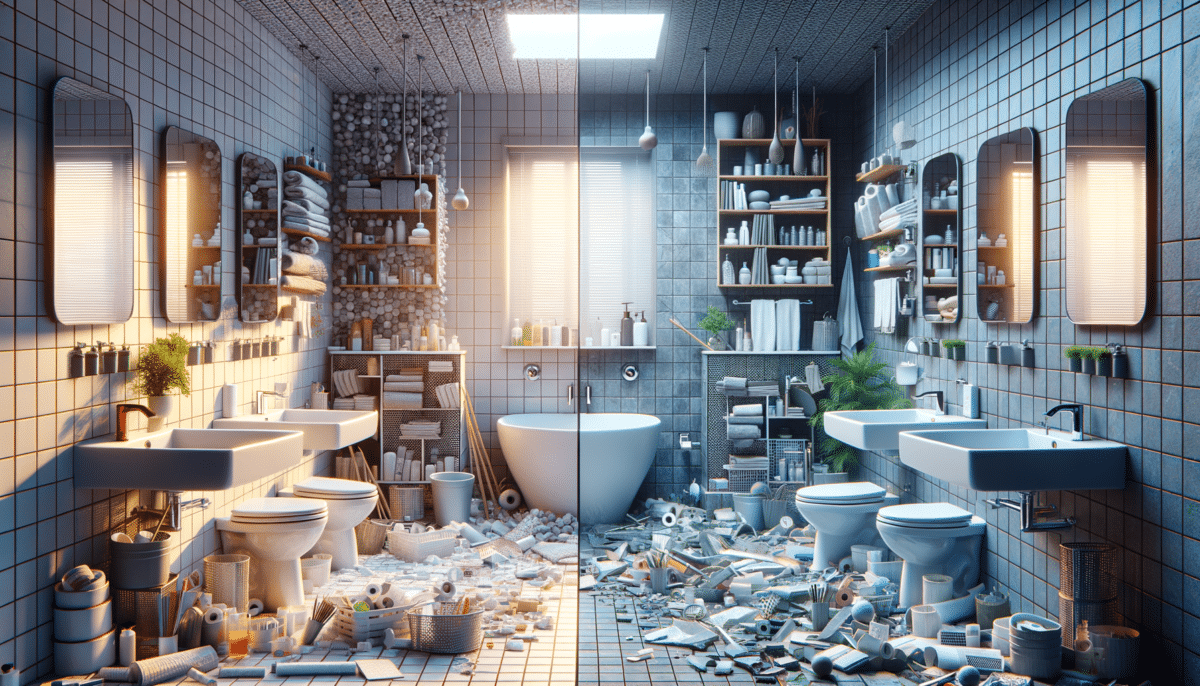Understanding Your Needs and Budget
Embarking on a bathroom remodeling project requires a clear understanding of your needs and budget. The first step is identifying the primary purpose of the remodel. Are you looking to enhance functionality, increase storage, or simply update the aesthetics? Understanding these goals will guide your decisions throughout the process.
Budgeting is equally crucial. According to recent surveys, the average bathroom remodel costs between $10,000 and $15,000. However, costs can vary significantly based on the size of the bathroom and the materials chosen. It’s important to allocate funds wisely, prioritizing essential updates over luxury additions if budget constraints exist. Consider setting aside a contingency fund of about 15% of your budget to cover unexpected expenses.
To ensure your remodeling project aligns with your financial plan, consider the following steps:
- Conduct thorough research to understand the cost of materials and labor in your area.
- Get multiple quotes from contractors to compare pricing.
- Prioritize your needs to focus on the most critical aspects of the remodel.
By clearly defining your needs and establishing a realistic budget, you can avoid the common pitfall of overspending and ensure a successful remodeling experience.
Choosing the Right Materials
The selection of materials plays a pivotal role in the success of your bathroom remodel. Not only do materials affect the overall aesthetic, but they also influence durability and maintenance. When choosing materials, consider factors such as moisture resistance, ease of cleaning, and longevity.
Ceramic and porcelain tiles are popular choices for bathroom floors and walls due to their water resistance and durability. However, natural stone tiles, while visually appealing, may require more maintenance to prevent staining and water damage. For countertops, quartz and granite are excellent options, offering both durability and a wide range of colors and patterns.
When selecting fixtures, opt for materials that can withstand frequent use and exposure to water. Stainless steel and chrome are both excellent choices for faucets and showerheads, providing a sleek look and resistance to corrosion.
Here are some tips to guide your material selection:
- Consider the climate of your area; high humidity may require more moisture-resistant materials.
- Balance aesthetics with practicality; choose materials that align with your style but are also easy to maintain.
- Research the longevity and warranty of materials to ensure you are making a sound investment.
By carefully selecting materials that meet your needs and preferences, you can create a bathroom that is both beautiful and functional.
Optimizing Space and Layout
Maximizing space and optimizing the layout are crucial elements in bathroom remodeling. A well-thought-out layout can enhance functionality and make even a small bathroom feel spacious. Begin by assessing the current layout and identifying any inefficiencies or areas for improvement.
Consider the placement of fixtures such as the toilet, sink, and shower. Ensuring that these elements are positioned for ease of use and accessibility can significantly improve the bathroom’s functionality. For small bathrooms, consider space-saving solutions such as wall-mounted sinks or compact toilets.
Storage is another critical aspect of layout optimization. Incorporating built-in shelves, cabinets, or vanity units can help keep the space organized and clutter-free. Consider vertical storage solutions to make the most of available wall space.
Here are some layout tips to consider:
- Maintain a clear path of movement by avoiding overcrowding with too many fixtures or furniture.
- Ensure adequate lighting to make the space feel larger and more inviting.
- Use mirrors strategically to create the illusion of more space.
By optimizing the layout and utilizing space efficiently, you can create a bathroom that is both practical and aesthetically pleasing.
Incorporating Modern Technology
Integrating modern technology into your bathroom remodel can enhance both convenience and comfort. From smart showers to energy-efficient lighting, technology offers numerous ways to upgrade your bathroom experience.
Smart showers allow you to control water temperature, flow, and even music through a smartphone app or voice commands. This can lead to a more personalized and enjoyable showering experience. Additionally, consider installing a smart thermostat to maintain an optimal temperature and reduce energy consumption.
Lighting is another area where technology can make a significant impact. LED lights are energy-efficient and offer a range of colors and brightness levels. Motion sensor lights are also a practical choice, providing convenience and energy savings.
Here are some technology upgrades to consider:
- Install a smart mirror with built-in lighting and Bluetooth connectivity for multitasking.
- Consider a heated floor system for added comfort during colder months.
- Explore water-saving technologies to reduce your environmental footprint.
By incorporating modern technology into your bathroom remodel, you can create a space that is not only functional but also future-ready.
Ensuring Proper Ventilation
Proper ventilation is a crucial aspect of any bathroom remodel, as it prevents moisture buildup, mold growth, and unpleasant odors. Ensuring adequate ventilation can significantly enhance the longevity of your bathroom materials and maintain a healthy environment.
The most common method of ventilation is through exhaust fans. These fans should be appropriately sized for the bathroom’s square footage to ensure effective moisture removal. Consider a fan with a humidity sensor that automatically activates when moisture levels rise.
Windows are another valuable source of ventilation. If possible, include operable windows in your remodel to allow for natural airflow. This not only aids in moisture control but also brings in natural light, enhancing the overall ambiance of the bathroom.
Here are some ventilation tips to consider:
- Ensure exhaust fans are vented to the outside to prevent moisture from being trapped in the attic or walls.
- Regularly clean and maintain fans to ensure optimal performance.
- Consider a timed switch to ensure fans run long enough to remove moisture after showers or baths.
By prioritizing proper ventilation in your bathroom remodel, you can protect your investment and create a space that is both comfortable and healthy.
